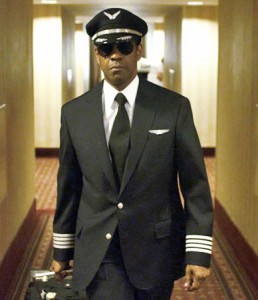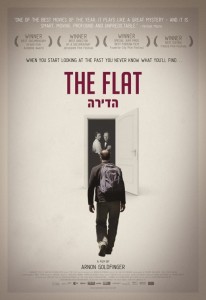Wreck-It Ralph
Posted on November 1, 2012 at 6:00 pm
B+| Lowest Recommended Age: | Kindergarten - 3rd Grade |
| MPAA Rating: | Rated PG for some rude humor and mild action/violence |
| Profanity: | Some schoolyard language |
| Alcohol/ Drugs: | None |
| Violence/ Scariness: | Cartoon-style action violence and peril, guns, explosions |
| Diversity Issues: | Strong female and disabled character |
| Date Released to Theaters: | November 2, 2012 |
| Date Released to DVD: | March 4, 2013 |
| Amazon.com ASIN: | B00A7OIXW6 |
 No one wants to be the bad guy anymore. In “Despicable Me,” Gru’s delightfully dastardly plans were no match for the overpowering adorableness of three little girls. “Megamind” found that being the bad guy was no fun after he vanquished the hero. Even the sharks in “Finding Nemo” became vegetarians, with support group meetings to chant, “Fish are friends, not food.”
No one wants to be the bad guy anymore. In “Despicable Me,” Gru’s delightfully dastardly plans were no match for the overpowering adorableness of three little girls. “Megamind” found that being the bad guy was no fun after he vanquished the hero. Even the sharks in “Finding Nemo” became vegetarians, with support group meetings to chant, “Fish are friends, not food.”
And now there’s Ralph (John C. Reilly), having something of an existential crisis. Back in the 80’s era of arcade video games, before people had home computers and game stations and televisions that were part computer and part game station to play on, if you wanted to play a game you had to go to an arcade and get a roll of quarters. The primitive 8-bit games had a charm of their own, in part from the novelty of games on a screen instead of being based on mechanical balls and levers, and in part because their very simplicity left a lot of room for the player to fill in the details from his or her own imagination. The brilliant documentary The King of Kong: A Fistful of Quarters explains that in some ways these older games still provide more of a challenge — they continue to fascinate competitive players.
This is a marvelous environment for a story, whether you grew up with these games and recognize the in-jokes or haven’t played a game since Pong and Tetris, even those who do not know a Wii from a Playstation. Wreck-It Ralph is so persuasively authentic it seems to be entirely at home with what has been referred to as “the Roger Rabbit of video games.” Ralph keeps knocking down the building inhabited by the Webelo-like residents of Niceville, and the relentlessly cheerful Fixit Felix, Jr. (“30 Rock’s” Jack McBrayer), with the help of the quarter-loading player, rebuilds so fast that Ralph gets thrown off the roof of the building and everyone in Niceville has a party. Ralph doesn’t break things to be mean. It’s just his job. It’s in his code. He feels that he is as much a part of the game as Frank and the building inhabitants. Ralph shares his conflicts with an adorable villain support group (love the zombie with axes attached to his hands). But he wants more.
Ralph is just lonely. He wants to go to the party. He wants to make friends. He wants people to like him. But just as he is coded to break things, the Niceville residents are coded to be scared of him. Just to get rid of him, one of them tells him that if he can win a hero’s medal, he can be their friend. So Ralph leaves his game to find a place where he can be a hero.
Ralph visits an intense and violent military game called Hero’s Duty with a tough female commanding officer named Calhoun (Jane Lynch). She is “programmed with the most tragic backstory ever” and probably inspired by video game voice star Jennifer Hale, the combination Meryl Streep and Angelina Jolie of the video game world. Everything seems to go according to plan until he somehow ends up in Sugar Rush, a game for children that looks like NASCAR if it was designed by Katy Perry. Adorable little children race cars made out of candy and cookies.
Maybe not so adorable. Just as Ralph is not so bad, the cute little kids of Sugar Rush are not so sweet. He is annoyed by Vanellope (Sara Silverman), a bratty little girl, but then joins forces with her to help her build a race car. And then he meets the “heroes” of Sugar Rush and finds that the line between good guy and bad guy is not what he thought it was.
The witty and vibrant worlds are gorgeously imagined (and of course now available in game form themselves), with a satisfying balance of heart and humor. The story nimbly mixes existential questions of identity, purpose, and destiny with a sweet friendship and knowing humor about the world of games and gamers and even some Joseph Schumpeter-style creative destruction. I loved the Mentos jokes and the detour to the car-building site. And I loved the constant playing with almost Pirandello-esque notions of the way we create our worlds and the assumptions that underly them.
Parents should know that this movie includes video game violence with guns and explosions, some mildly disturbing images, characters in peril, and some potty humor.
Family discussion: How do you know what is “in your code” and what you can change? Can a bad guy become a hero? What did Ralph learn from Vanellope? Why did Vanellope love her car?
If you like this, try: Two more movies with bad guy-good guys, “Despicable Me” and “Megamind,” as well as “King of Kong,” the brilliant documentary about a video game competition.


